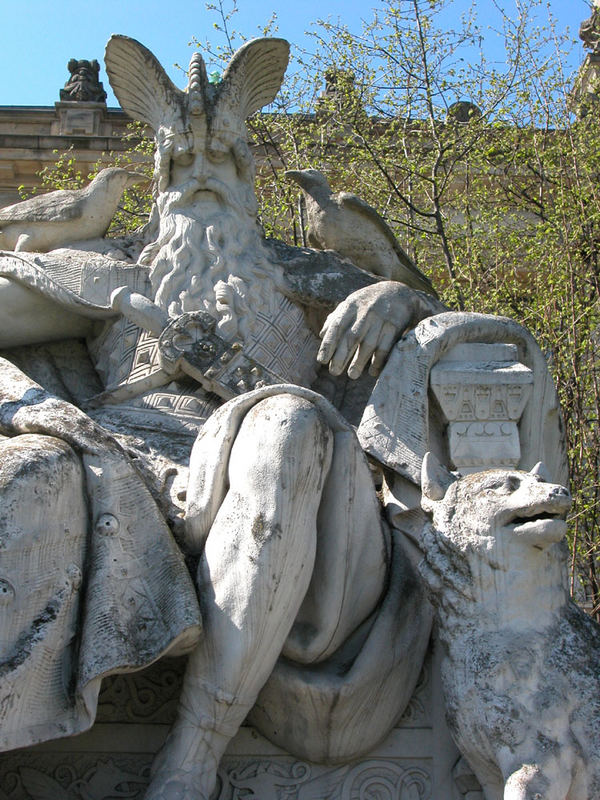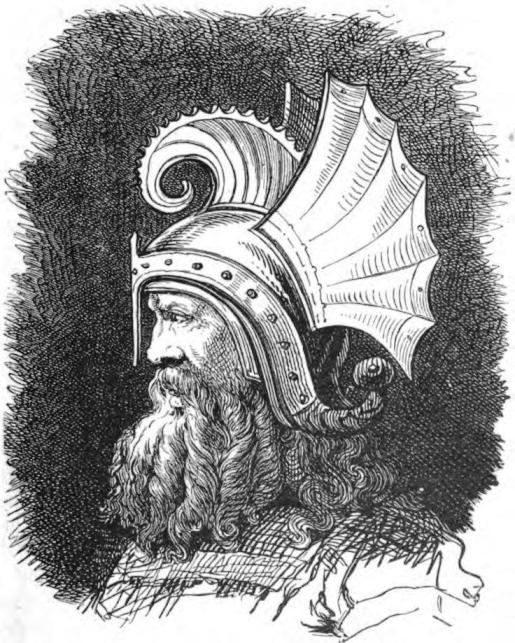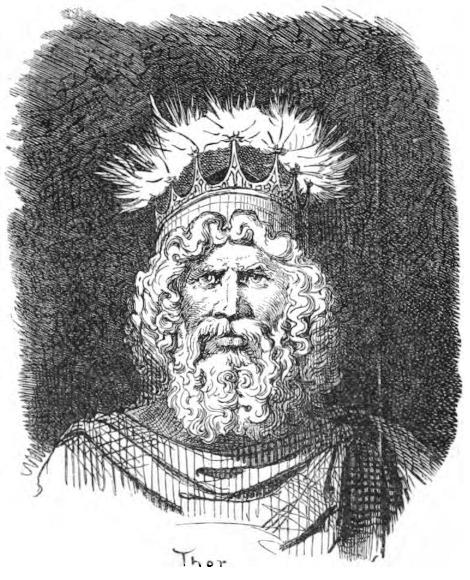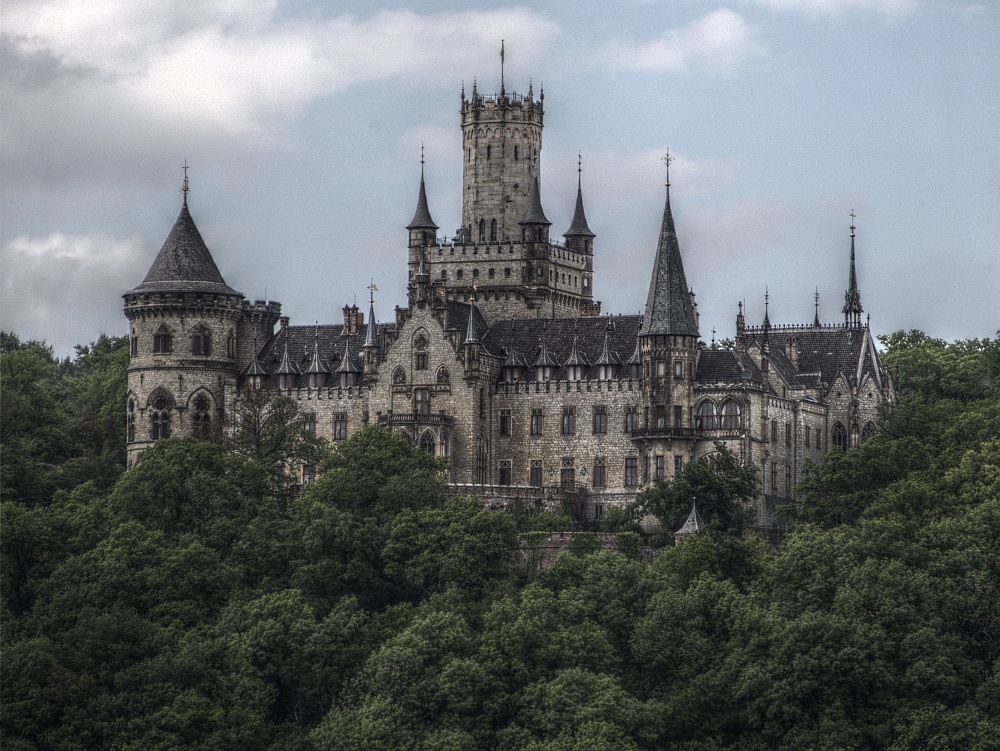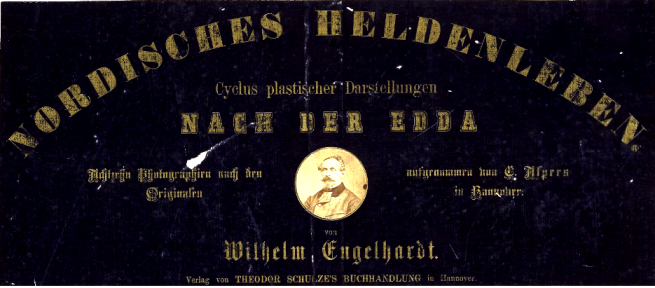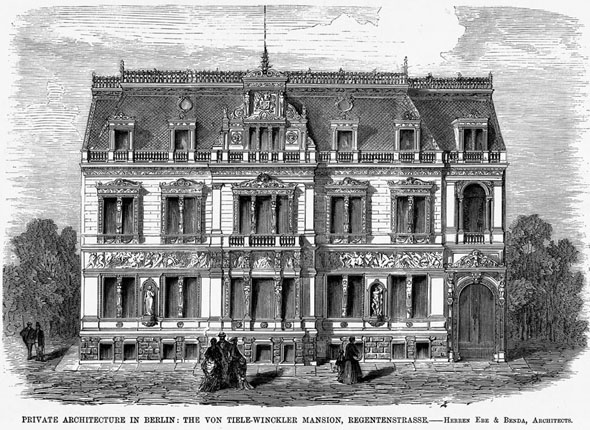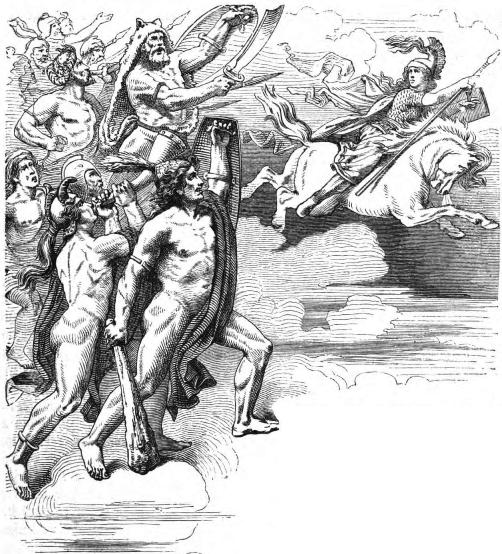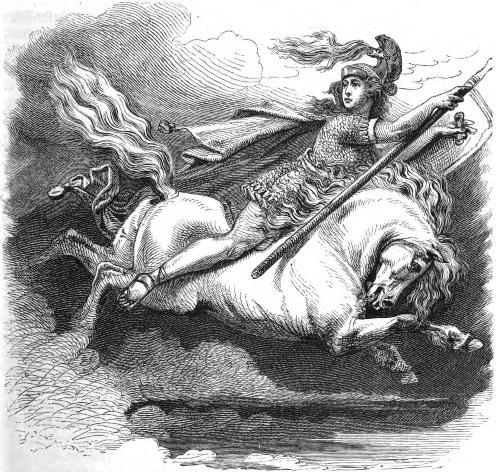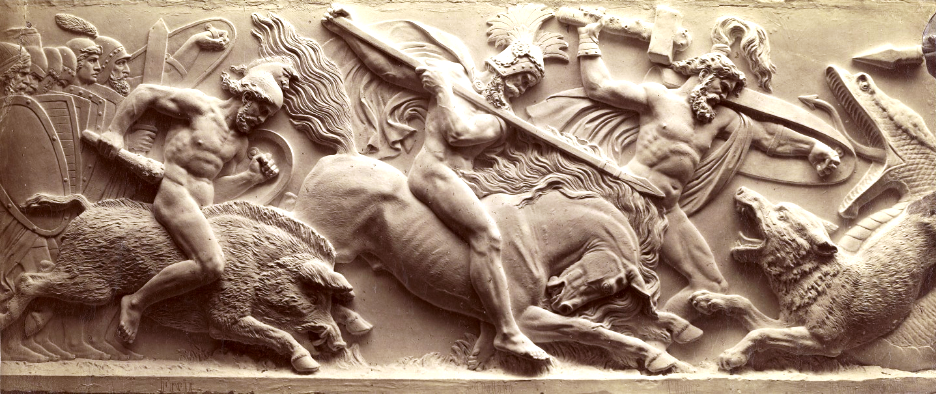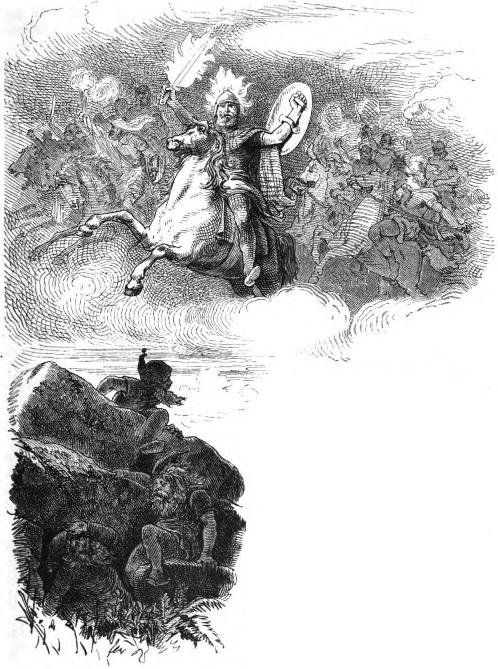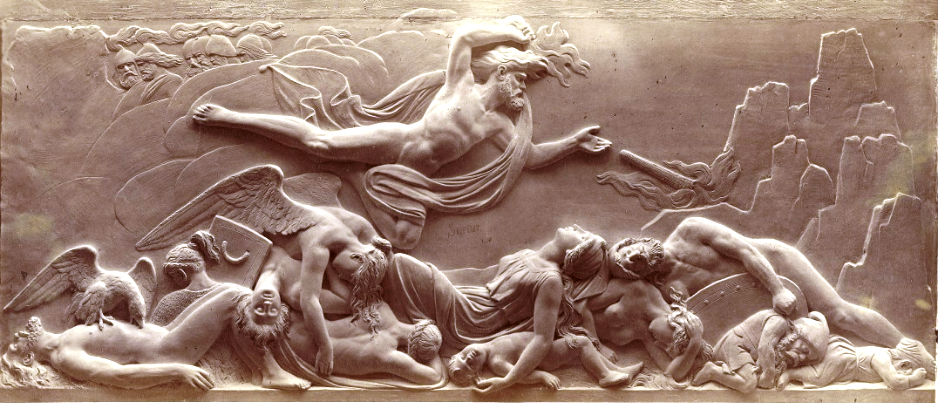Friedrich Wilhelm Engelhard
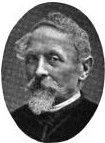
The Edda Frieze
and other works
See Also The Edda Frieze: A Panoramic View
[HOME]
[POPULAR RETELLINGS]
|
Sculpter Wilhelm Engelhard executed many groups, single figures and genre pieces. Among his creations are the limestone statues of Odin, Thor, and the Valkyries, a marble statue of Baldur, as well as the Edda frieze, his chief work. Most of which no longer survive. |
||||||||||
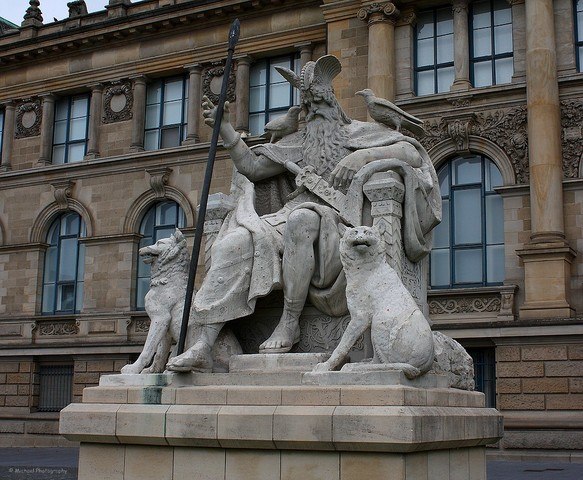 1888 Odin Enthroned This limestone group statue, established in 1902, stands behind the Museum of Lower Saxony in Hanover, Germany. Heavily damaged in World War II, the limestone group was removed in 1943, and put back up in 1987 after extensive restoration. |
||||||||||
|
||||||||||
Wilhelm Engelhard or Engelhardt was born September 9, 1813 in Grünhagen in Lüneburg. He went to school in Paris in 1830. Engelhard initially trained to become an ivory carver, before studying in 1837 at the Higher Vocational School in Hanover, supported by the Hanoverian royal family in London and Paris. In 1839, he was a student of Bertel Thorvaldsen in Copenhagen, and in 1841 of Ludwig Schwanthaler in Münich.
by F.W. Heine, which first appeared in Unsre Vorzeit (1882), are identified as based on the frieze by Prof. Engelhard (pp. xv-xvi). The introduction to Unsre Vorzeit states that because Prof. Engelhard did not have sufficent leisure time to make drawings for the book himself, that the work was undertaken by a younger illustrator F. W. Heine, who worked "partially from the frieze, and partially from sketches, under the direction of the Master." The same work mentions that Heine contributed a number of original drawings as well. A description of the frieze panels (abridged in translation here) from 1891 allows us to distinquish which images were based on the Edda frieze: |
||||||||||
At the beginning of the frieze, on the left, Germanic warriors called by horn blasts storm into battle. Ahead of them, a Valkyrie rides, leading the warriors to the battlefield. Her steed barely touches the ground. A helmet covers her head. Armed with shield, spear, sword or mace and partly clothed with skins, the champions follow. |
||||||||||
Another battle-maiden, already settled on the field of battle, tends to the wounded. |
||||||||||
|
|
||||||||||
   |
||||||||||
Another ascends to Valhalla, flying through the air, carrying a fallen hero on a shield up to Odin's hall. The messenger of the gods, Hermod, Odin's nimble son, and Bragi, the god of song and poetry, a bearded old man in a long robe, harp in hand, welcome the new einherjes. An oak wreath adorns Bragi; helmets adorn Hermod and the einherjes. |
||||||||||
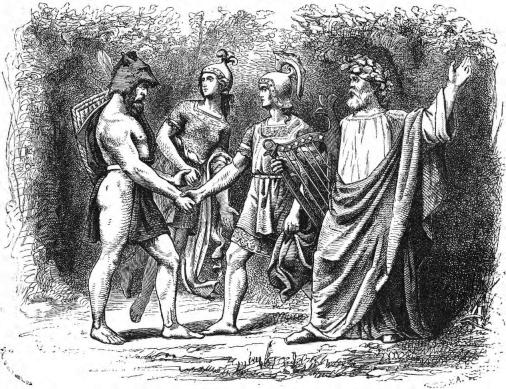 Heimdall and Bragi welcome a warrior into Valhalla |
||||||||||
On the slightly protruding part of the frieze that occupies the center of the house, Bragi (on the left) introduces a hero, who still wears his shield along with a quiver and arrows, into Valhalla, where Odin sits on his throne, flanked by his two wolves, beckoning the newcomer. Helmet, armor and scepter grace the king of the gods. Valkyries are on both sides, one of which holds a drinking horn. On Odin's right, we see Idun, wife of Bragi, holding the apples of immortality in a tray, and beside her Frigg, wife of Odin. Odin himself is a strong male figure, a draped garment wraps his knees. Idun and Frigg are figures of perfect feminine beauty. Long robes fall down to both feet. A wreath adorns Frigg's head, flowers and foliage adorn Idun's head, draped with a veil-like cloth in back. |
||||||||||
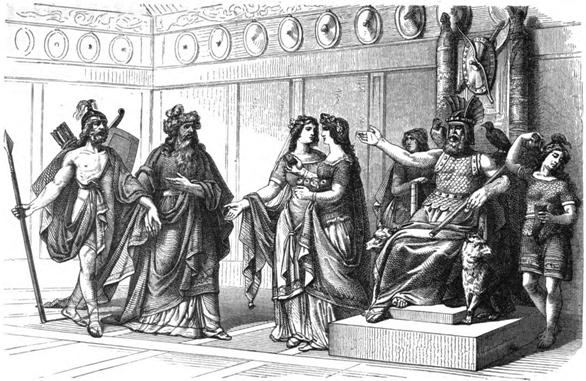 Odin, through Bragi, welcomes a hero into Valhalla  |
||||||||||
Ragnarök is depicted on the right, long side of the frieze. Judgement day has arrived according to the rooster who crows for the Aesir. Heimdall, the guardian of the sky, blows his far-sounding horn to summon the gods and einherjes to the decisive battle. The heroes rush forward in droves. |
||||||||||
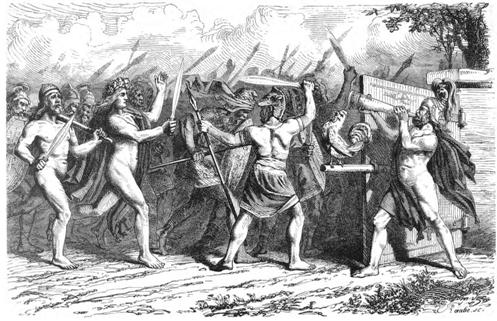 Heimdall's horn calls the warriors to battle 
|
||||||||||
|
||||||||||
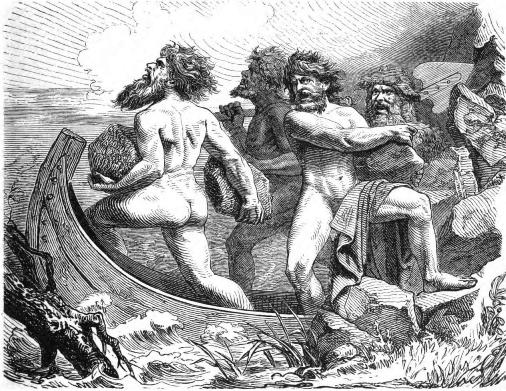 The giants (arriving in Naglfar) begin the battle against the inhabitants of Asgard. A drawing from 1859 shows the same scene (far right) in context:  (poor quality image of entire panel) 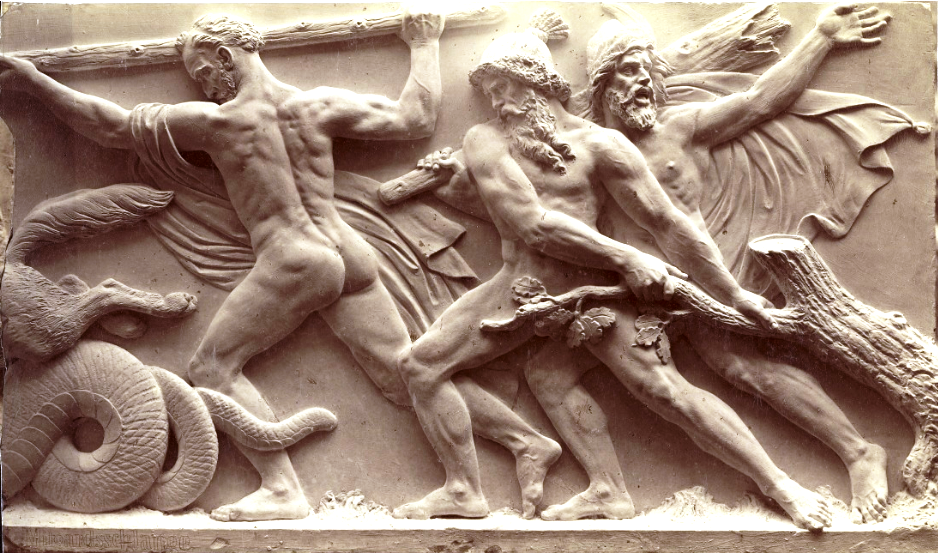 Detail from center of panel above
|
||||||||||
Von Tiele-Winckler mansion in Berlin. |
||||||||||
  |
||||||||||
From the contour drawings of 1850, it is clear that the beginning of the original frieze is somewhat different than that reproduced in the Von Tiele-Winckler mansion in Berlin. In the larger frieze, the heroes are first called to battle, while in the Von Tiele-Winckler version, an introductory scene shows a gathering of warriors grouped on either side of an ancient bard. Under an oak tree, the garlanded and bearded singer, dressed in a draped garment, sits on a passage grave. With a harp, he accompanies his singing, in which he praises the former heroes. People gather around listening reverently. |
||||||||||
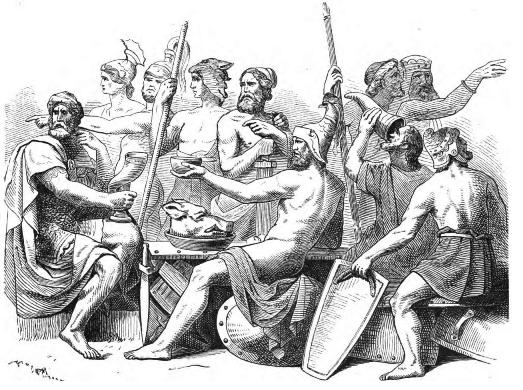 Drinking feast 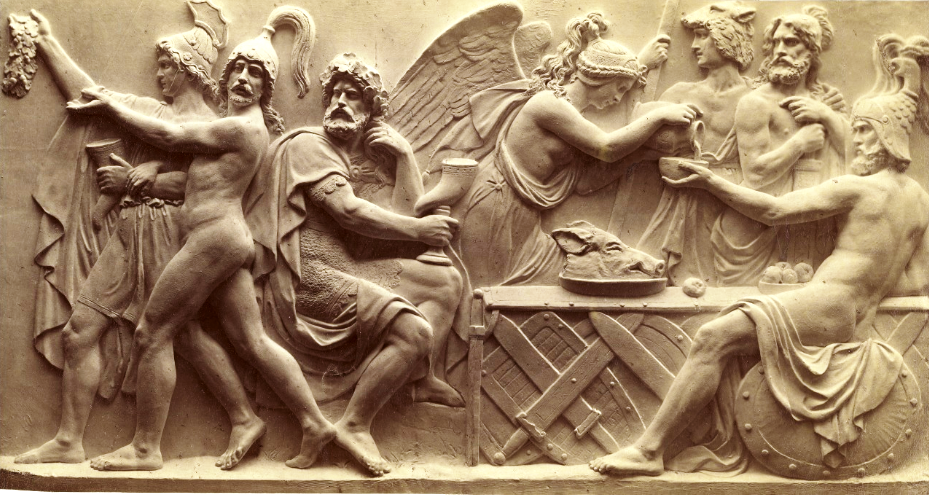 |
||||||||||
|
The second main part, the Ragnarök, opens with the departure of the einherjes from
Valhalla to the final battle at the calling of Heimdall's
horn. For the sake of symmetry in the more confined space, Engelhard has the horn-blowing warriors, headed to the battlefield, open the first main part on the left. The second main part on the right depicts the cock of the Aesir and Heimdall, who with his horn also calls the einherjes for the last battle. The termination on the left side ends with the arrival of the fallen heroes in Valhalla. On the right side, the run ends with the arrival of the frost-giants to the final battle. Below the frieze, in a kind of niche, Odin occurs again standing. Thoughtfully, he has placed his left hand on his full beard, while the right is raised. He is adorned with helmet and armor, but the long cloak and the scepter, which characterize the enthroned God above, are missing, and a sword is placed in his belt. His wolves do not lie at his feet, but his two ravens sit on his shoulders. To the right, Thor is found in the same size as Odin. He is also shown standing. He holds the dreaded hammer over his left shoulder. |
||||||||||
| Finally, these images by F. W. Heine, attributed as being "after Prof. Engelhard" and as belonging to the Edda frieze, most likely erroneously, exhibit stylistic similarities with the Edda Frieze, and may have been inspired by it, directly or indirectly. | ||||||||||
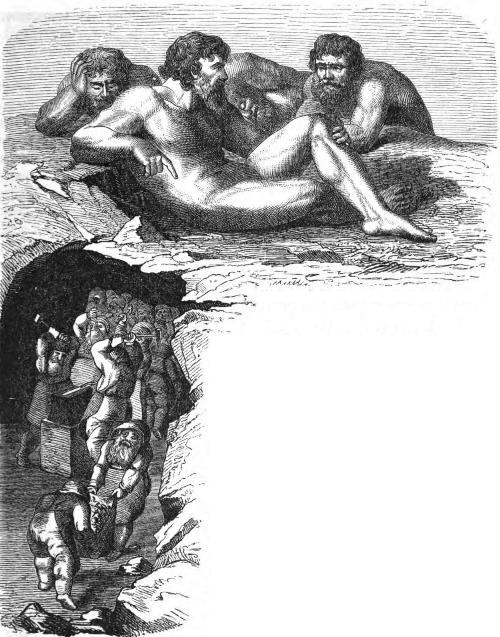 Giants and Dwarves |
||||||||||
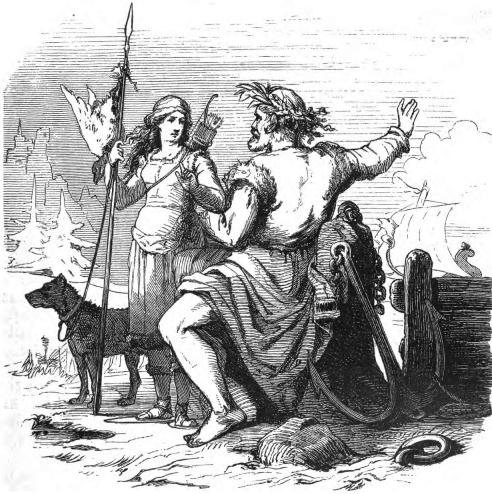 Njord and Skadi on the way to Noatun |
||||||||||
 Aegir and Ran |
||||||||||
 Loki and Sigyn |
||||||||||
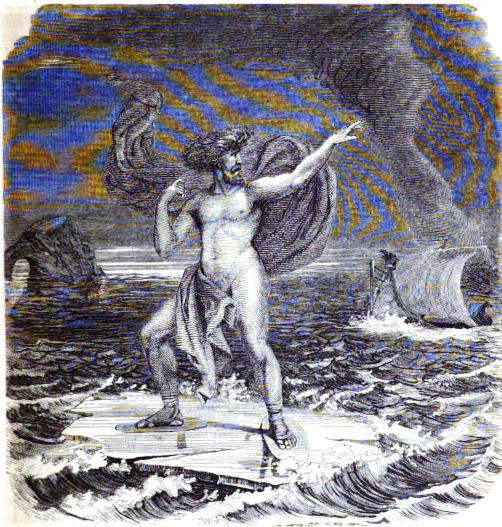 Vidar |
||||||||||
 Loki's and Heimdall's death 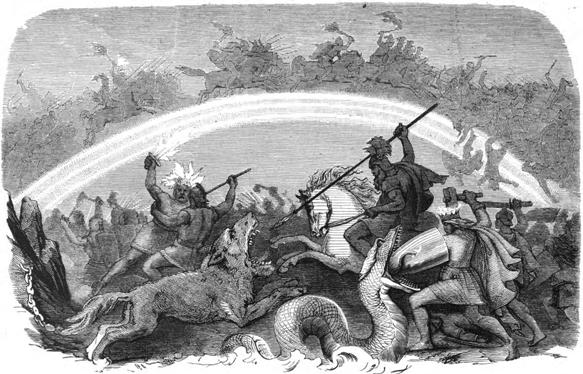 This original F.W. Heine illustration appears to have been inspired by the frieze, but clearly is not a part of it, based on a comparison with the images above. See Also The Edda Frieze: A Panoramic View |
||||||||||
|
Sources: Die Deutsche Götterlehre und ihre Verwertung in Kunst und Dichtung, (1891) Volume 1 by Paul Herrmanowski. Photographs from Nordisches Heldenleben. Cyclus Plastischer Darstellungen Nach Der Edda (1867) at the J. Paul Getty Museum. |
||||||||||
[POPULAR RETELLINGS]
